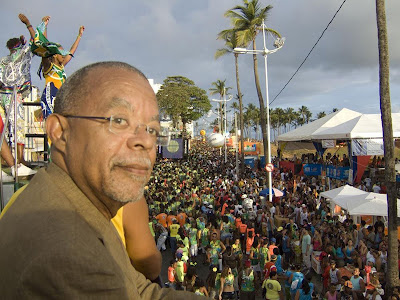Brazilian Race, Ethnicity, and Multiculturalism! Part 1 of a series
Posted on Monday, July 23, 2012
Before I ever set foot in Brazil, I knew that is was a country full of colors and cultural influences like the United States. I also thought that Brazil would be just like the picture portrayed in many other Latin American countries, that being the typical brown stereotypical Latin we all know. To my surprise, and delight, I was wrong. Very wrong. Brazil was and is much more than Ronaldo and
Carmen Miranda.
Walking though the streets and along the Beaches of just Rio, I saw every hue and combination of physical feature just walking down Avienda Nossa Senhora in Copacabana. The scene reminded me of Providence, Rhode Island, when I first moved there in 2006. Providence has very diverse population of people from the Dominican Republic, Puerto Rican, Cape Verde, Cambodia, and Portugal. This was much different what I experienced in North Carolina growing up. Typically Black or White with a speckle of Latino or Asian. But even experiencing the diversity of Providence didn't compare to what Rio had in store for me. With being in North Carolina or Rhode Island, heck, basically all over the United States, even with lots of diversity, most people are segregated by ethnic group, religion, etc, etc. The United States calls itself a "melting pot" but really it is more like a salad mixing bowl. Many different ingredients that can work well together but never blend. Each piece can be easily separated and identified just like communities and neighborhoods that dot the US. Brazil, on the other hand, is definitely a melting pot of native american, european, african, and asian customs, cultures, and peoples. Take 10 people of the same complexion and ask them what their ethnic background is and you are likely to get 10 different answers. Why is this? Well it all goes back to how Brazil was colonized by the Portuguese.
 |
| Gilberto Freyre |
Sociologist and author Gilberto Freyere examines and describes Brazilian colonization and the dynamics of that developed between Natives, Portuguese, and Africans. His book entitled , Casa-Grande e Senzala or The Masters and the Slaves, breaks down the history, influences, and consequences of Portuguese colonization with some comparisons the the colonization of North America. Basically the major difference is the willingness, eagerness, and/or desperation of the Portuguese to from relationships with native women and eventually african women upon the expansion of the slave trade. This happened also in North American but what was eventually banned in the North became accepted, common practice in the South. Continuous miscegenation between Native, African, and European peoples has lead to this rainbow that is the Brazilian population. Most Brazilian can trace their ancestry to euro/native, euro/african, african/native background and many times all 3 are found. More recently, the program Black in America, explores are the African roots of Brazil. Dr. Henry Louis Gates, Jr traveled to the city of Salvador in the Brazilian state of Bahia. Salvador is known as center for African culture and history and I highly recommend this series to anyone who is interested in the african roots of Brazil and South America.
 |
| Dr. Gates - Carnaval - Bahia |











Discussion
Post a Comment